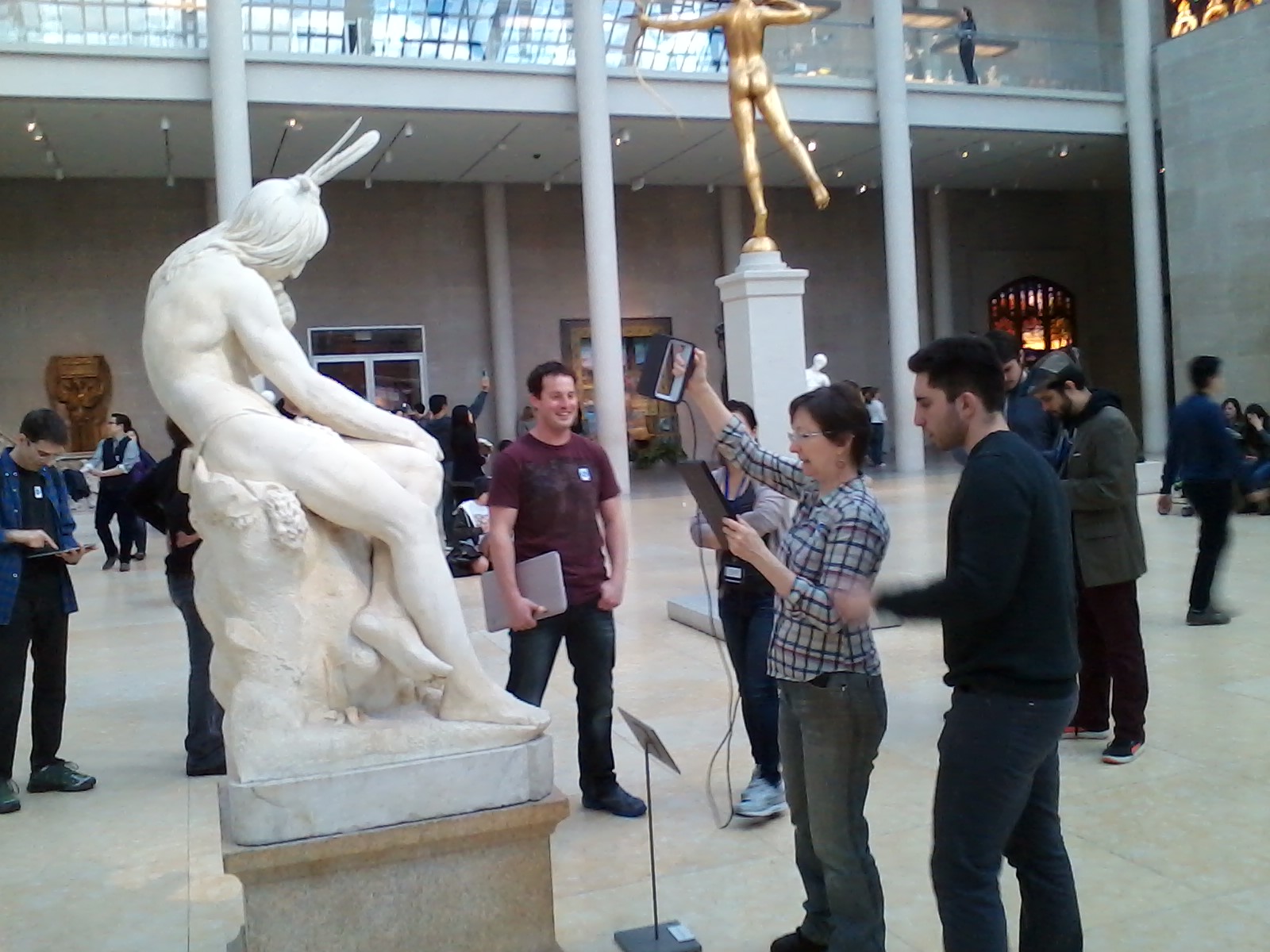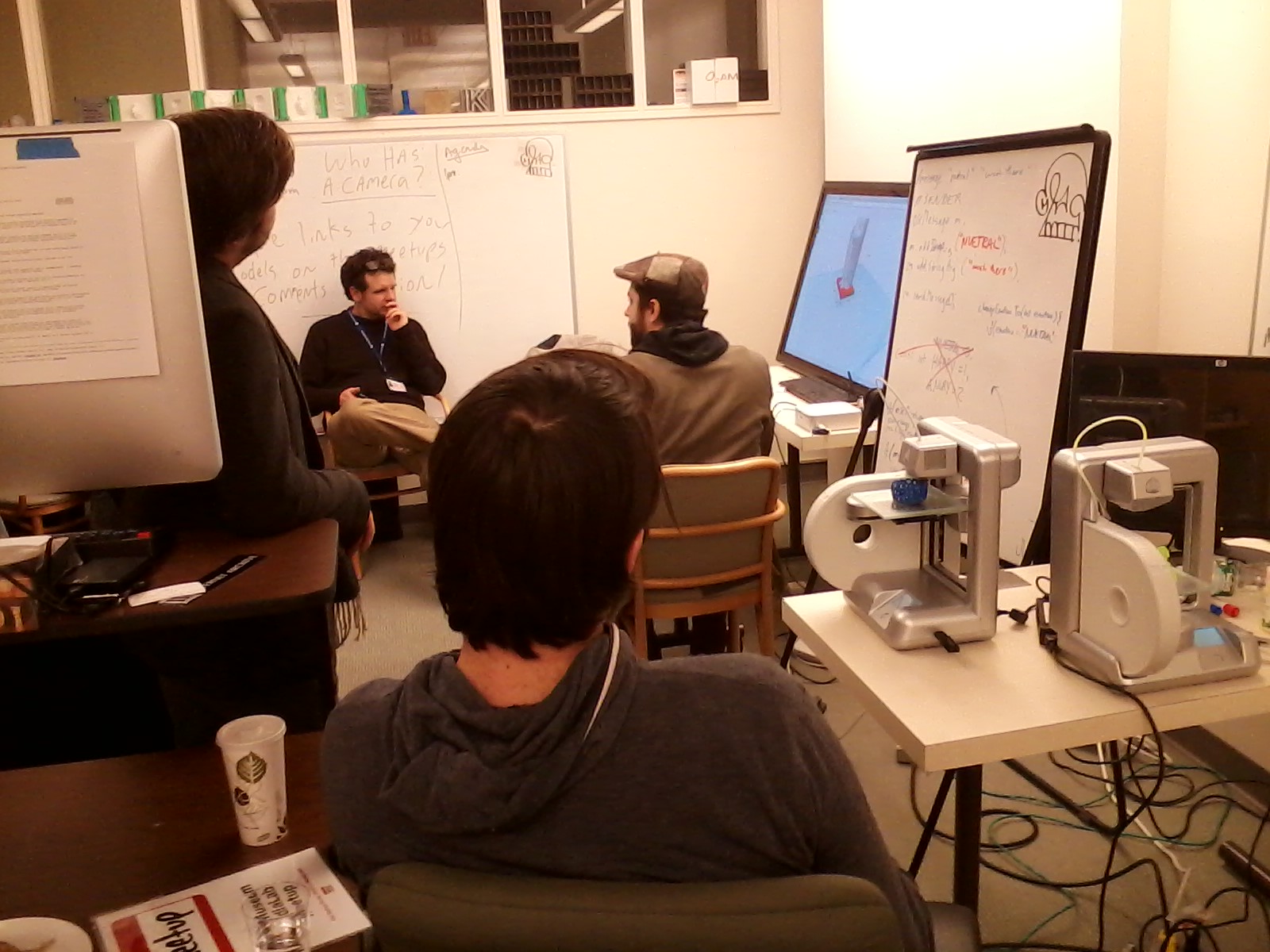I just joined the NYC Museum MediaLab Meetup group, and on March 15 I attended my first meetup for a 3D Funday at the Metropolitan Museum of Art. This was a great opportunity to learn about 3D scanning, modeling, and printing technology. We were able to experiment with most of the tools ourselves – and anything I didn’t get to try myself, I got to peek over the shoulder of someone else using. There were lots of questions asked and answered, with everyone being extremely generous about sharing their knowledge and ideas.
After lots of time to get to know the other meetup-ees, and to hear about a great range of exciting projects everyone’s working on, we all sat down to formally introduce ourselves, and then heard from artist Jeff Hesser. Jeff spoke about the relationship between three different threads in his work as an artist: his traditional work with figurative sculpture, his teaching, and his work with digital media. His work deals with several different kinds of tension: between realism and abstraction, between memory and forgetting, between permanence and impermanence, between old age and youth, all of which echo the tension between the physical and the digital. The issues he brought up were a great way to get us started on our day, and none of us who were there will ever look at a sculpted eye the same way again.
Several of us commented on the fact that the act of scanning the sculpture in the galleries really forced us to do a kind of close looking that we might not have done otherwise (I have similarly found this to be true in my work with students to create objectVRs of historic clothing). To make sure that we were doing a good job of catching all the nuances of shape in our scans, we really had to look very closely at just what it was we were scanning. The act of choosing what to scan also became another kind of close looking, as we examined objects very carefully to choose what we thought we wanted to capture for different projects, and what we thought would make a successful scan, based on lighting and physical access to the different sides of the object. As artist Jeff Hesser said in our discussion after our scanning time in the galleries, “the making of the thing leads to a deeper experience of it.” This was also true as Don Undeen demonstrated how to work with a completed scan using the TinkerCAD software, and the experimentation began: to turn the object into something new.
If you’d like to see what we scanned that day, you can do so at http://www.thingiverse.com/met/collections/museum-medialab-meetup-3d-funday-2 (the Buddha body at the very bottom, and the Masonic chair, were two that I helped to scan). These are best viewed in Chrome as your browser, I believe. Choose on an object, then on its page you’ll usually see a choice of views, click on one that’s blue, and then click on “thingiview” (doesn’t work in Safari), then you can click/drag to rotate it and see all its 3D glory. These scans are still very rough – the idea is that our next meetup will be an opportunity to clean up the scans and do something with them.
The conversations that day really brought me back to conversations about digital material culture from THATCamps past. The scanned objects float in space in the software, initially removed from the context in which they were captured, so the focus is on the object itself. This allows for a kind of close looking that feels surreal, allowing you to see all sides of an object, around, above, and below (and sometimes even inside). This removal from the physical context initially feels wrong, but of course it’s precisely what museums do when they place objects in white cube galleries very different from the context in which they were made, used, or stored.
I’ve had several discussions over the years with museum folks and educators about the challenges of portraying the different contexts in which an object has lived over the course of its life – for some objects, there are many. Can we combine our 3-D models of these objects with models in which we re-create several of the different spaces from their history?
Anyway, here’s an outline of what we did that day:
“Scan, sculpt, print”
that’s what Leanne from 3-D systems wrote on the whiteboard to start us off for the day
- Scan
- Sense scanner from 3D Systems (shown in the top photo above) – first we practiced scanning each other, then we worked in teams to scan some sculpture in galleries where we had permission from curators
- 123D Catch photogrammetry – this app works on iOS, in a web browser, or as a PC download – you take a series of photos of an object, circling around it, and the software stitches the images together into a 3D view
- Sculpt
- Print
- a few test prints with the adorable Cube printer, from 3D Systems
- an example of a resin printer, demonstrated by another Meetup-ee
- a larger printer in the Met MediaLab, in the middle of a weeklong print
Many thanks to Don Undeen and the team at the Met MediaLab, to artist in residence Jeff Hesser, to the team from 3D Systems who let us play with all their great tools, and of course to the powers-that-be at the Met who let us scan and photograph objects in the first place. I’m really looking forward to the next MediaLab Meetup!
Also, just as an aside, I appreciated the poetry of spending time in a digital media lab which is a re–mediated (ha!) former slide library.








One Response to 3D Funday